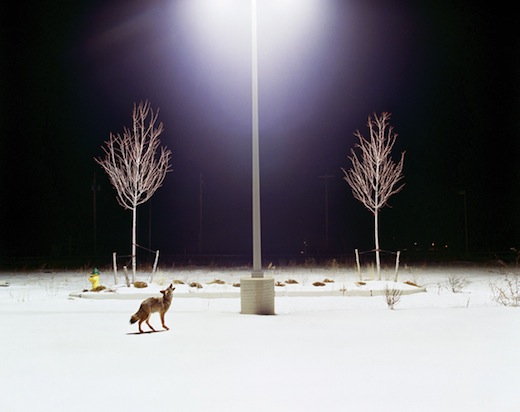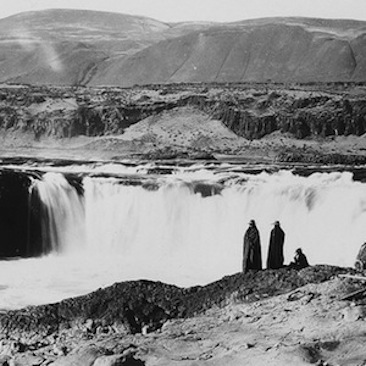Our near-downtown neighborhood buzzed all summer about the coyote. Facebook and blogs noted its daily (and nightly) moves with awe and fear. TV stations joined the chorus. It was if an alien had landed in our midst. The sightings advanced closer to our house, and one night my wife and I heard unfamiliar sounds growing louder. We realized it was the coyote yipping its way along our street, announcing its presence in the land of two-legged creatures. A few days later as I drove my son to afternoon swim lessons, the coyote padded slowly across the street a hundred feet in front of us. It appeared neither anxious or hurried.
The coyote’s demeanor left me wondering what the urban world looks like to wild animals. Are the sights and sounds and smells not only foreign but also alluring for reasons we don’t understand? Is the draw simply easier-to-find food and fewer predators or more than that? Consider what must have been coursing through the mind of another coyote discovered lounging on the train serving Portland International Airport.
These increasingly frequent intersections of two worlds, even in metropolises such as Chicago, are explored in “Domesticated,” an evocative series of images that photographer Amy Stein calls “modern dioramas of our new natural history.”
Within these scenes I explore our paradoxical relationship with the ‘wild’ and how our conflicting impulses continue to evolve and alter the behavior of both humans and animals. We at once seek connection with the mystery and freedom of the natural world, yet we continually strive to tame the wild around us and compulsively control the wild within our own nature.”
Stein’s photo “Howl,” displayed above with her permission, echoes for me long after our neighborhood coyote has departed. The cry in the night could be a lament, a warning, a greeting. Or proud pronouncement “I am home.” The mystery is we’ll never know, and that’s the connection.



Comments on this entry are closed.